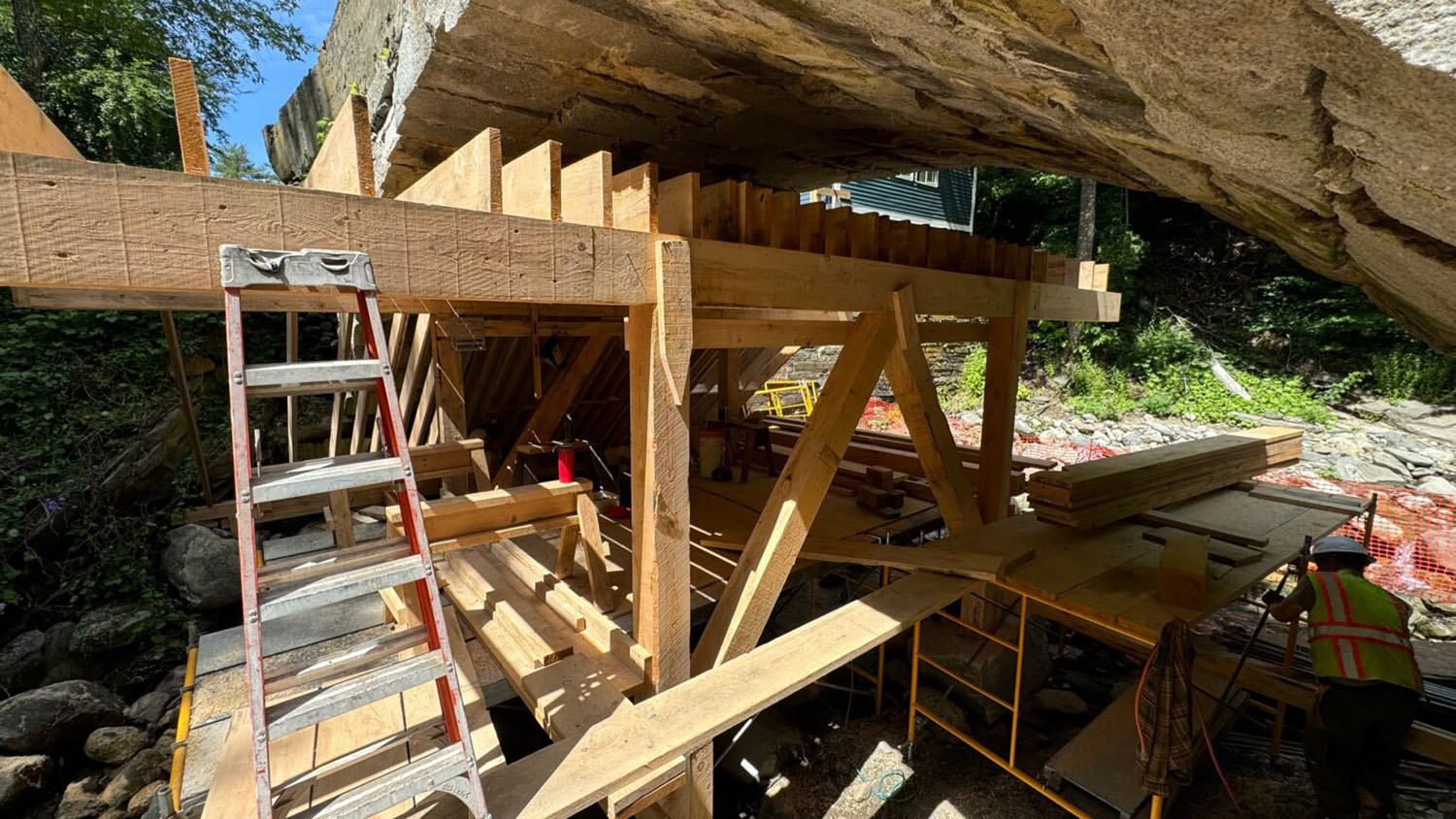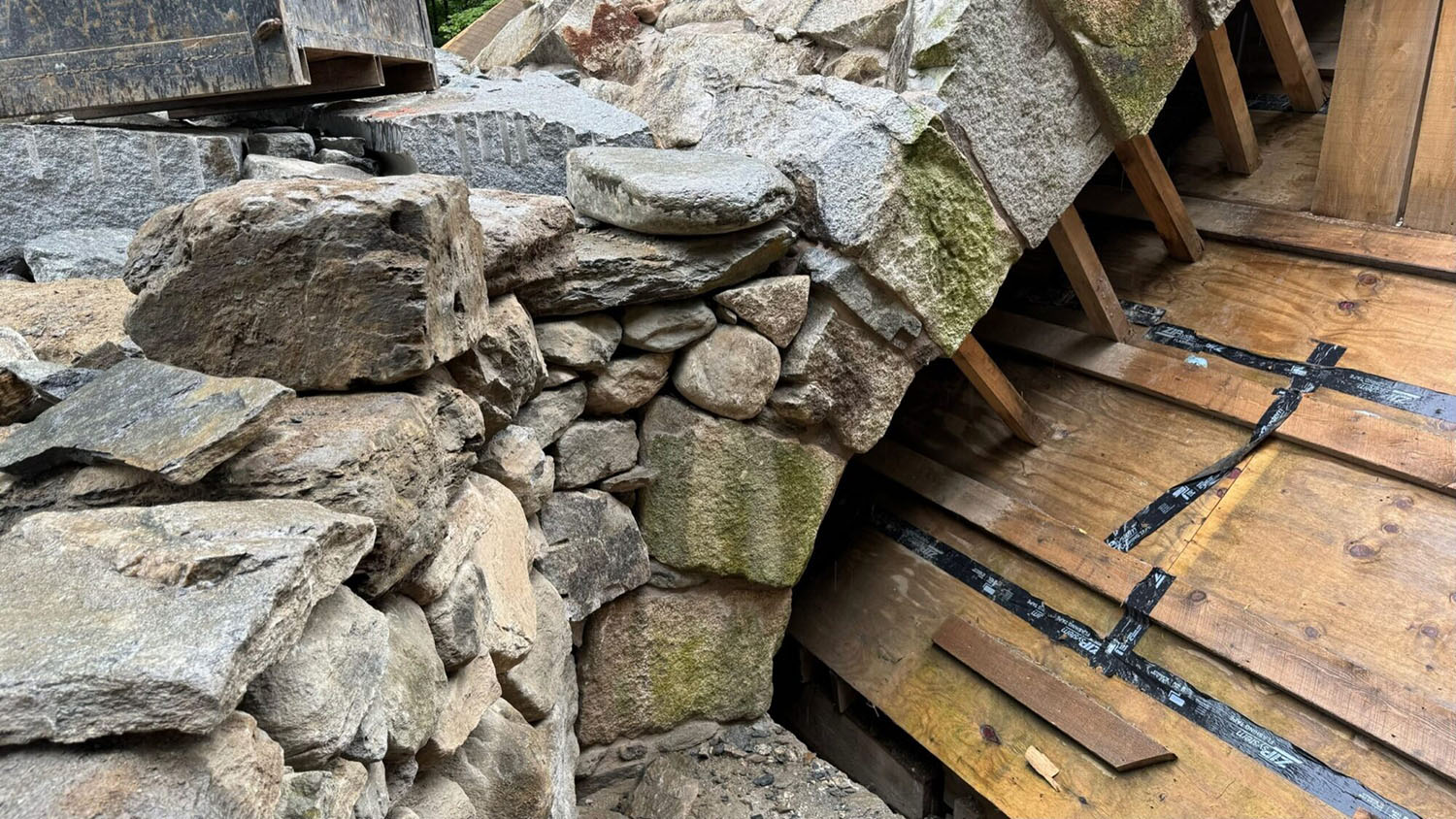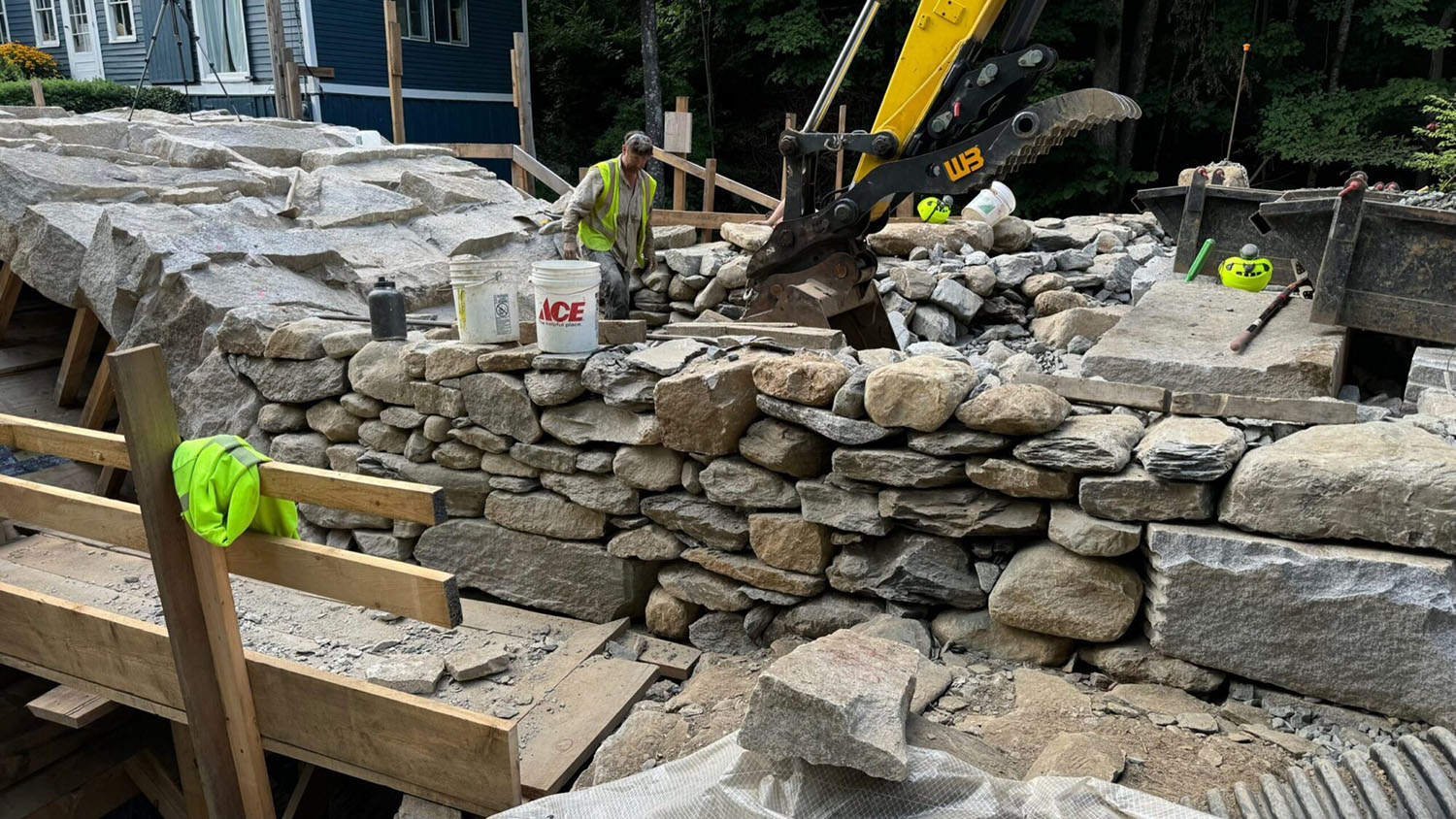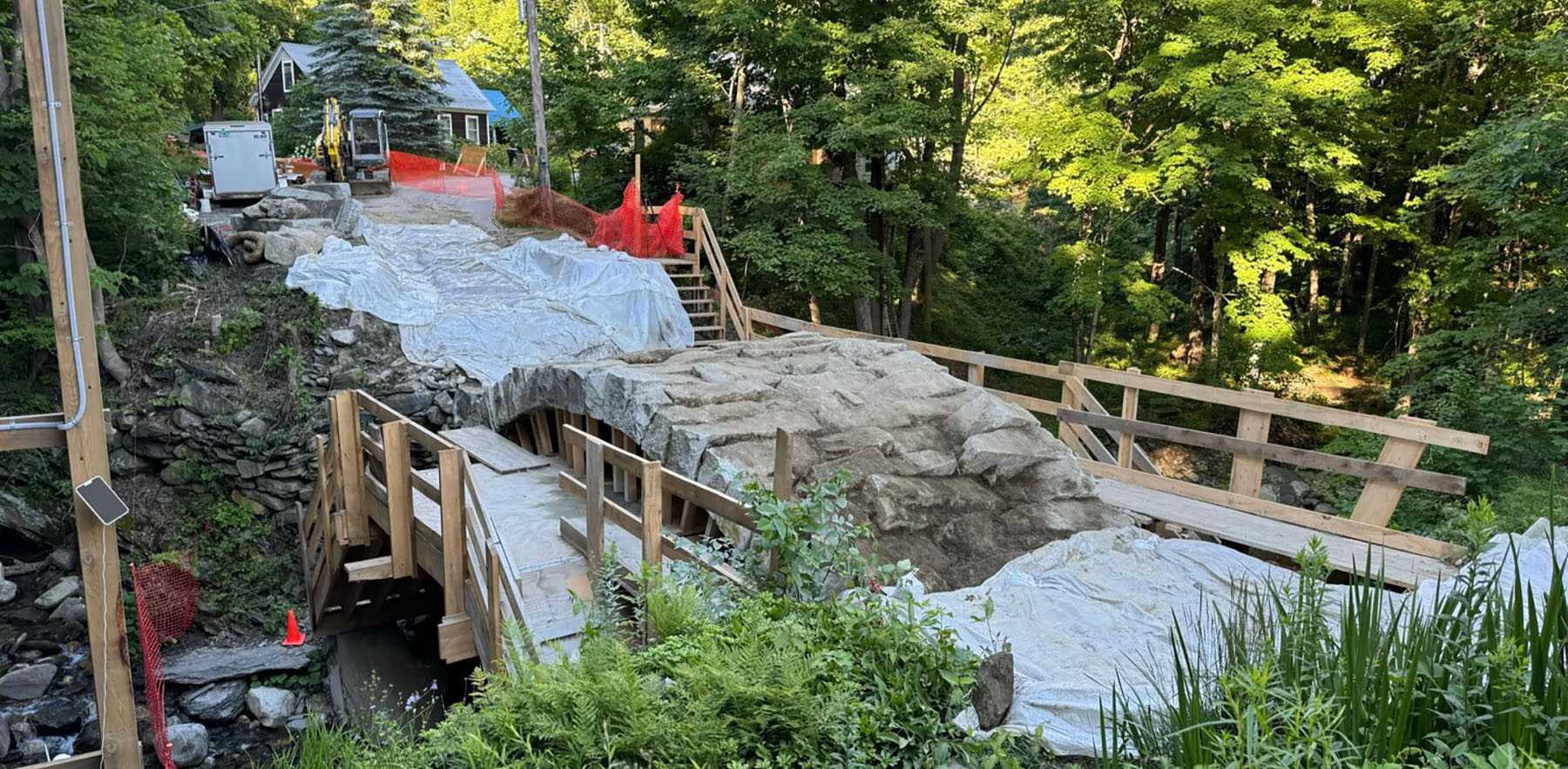
Project Coordinator: Brian Post, Standing Stone
Lead Waller: Jared Flynn
Originally built in 1910 by James Ottis Follet, the West Townshend Stone Arch Bridge is both a critical transportation artery to those living in the area, as well as an example of the region’s historic bridge styles. After serving the community for over 100 years, the bridge had begun to seriously deteriorate. Years of inadequate drainage had caused water trapped within the structure of the bridge to continually freeze and thaw with the seasons, ultimately causing the spandrels and parapets to lean outward, threatening the structural integrity of the bridge.
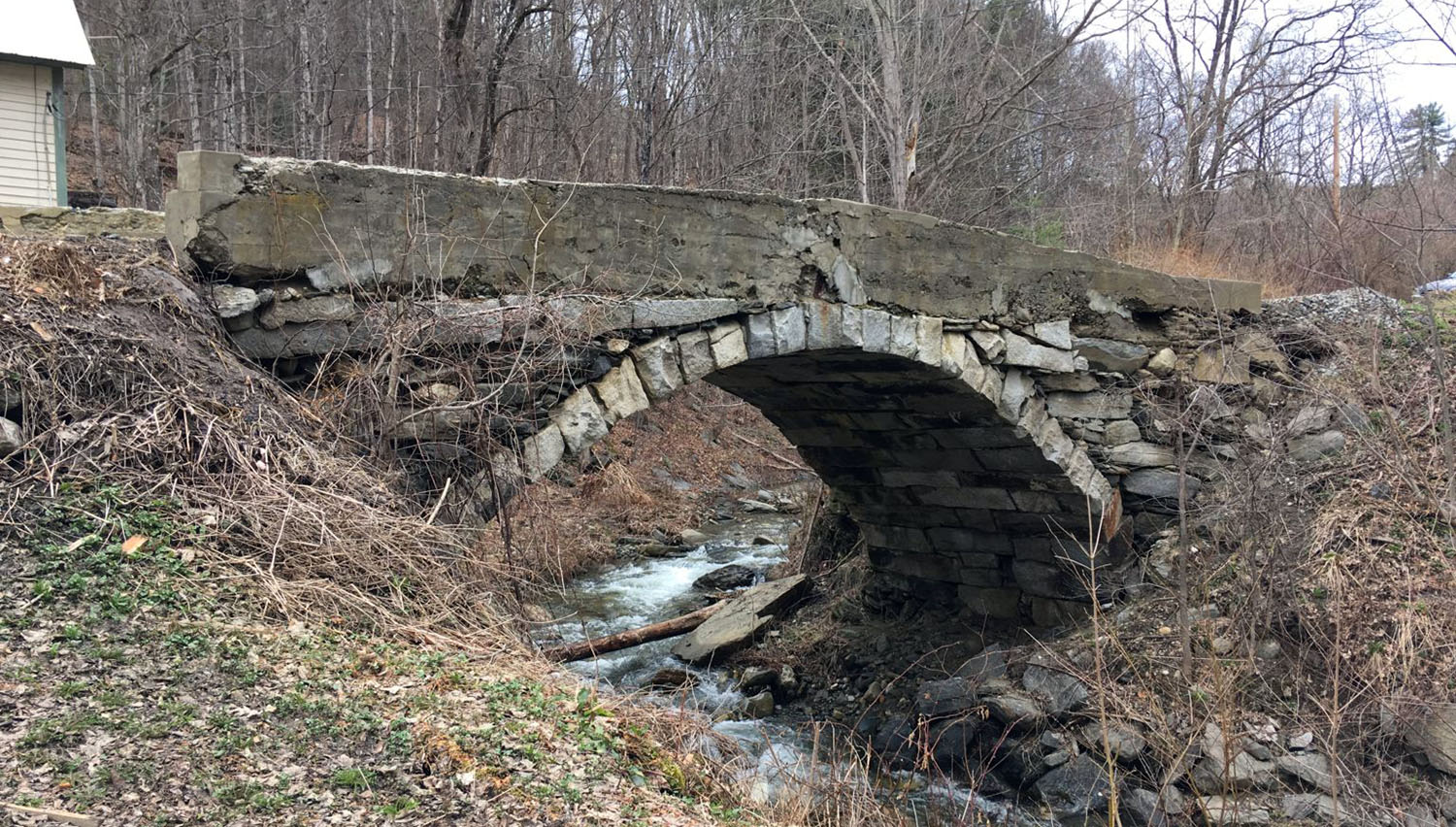
Bridge in 2023 before restoration
During the original construction most of the bridge was dry laid stone (without mortar), though the arch ring itself was originally mortared. Due to the rigors of time, the mortar has substantially deteriorated, which dramatically weakens the entire structure.
In several places the bedrock on which the bridge was erected has also begun to erode, allowing the bridge to settle and shift causing further strain on the entire structure.
Other factors such as erosion from flood events (like those in summer 2023) and stone displacement caused by vibration from modern vehicle traffic have caused major impacts to the bridge, some of which could never have been imagined by the original builders.
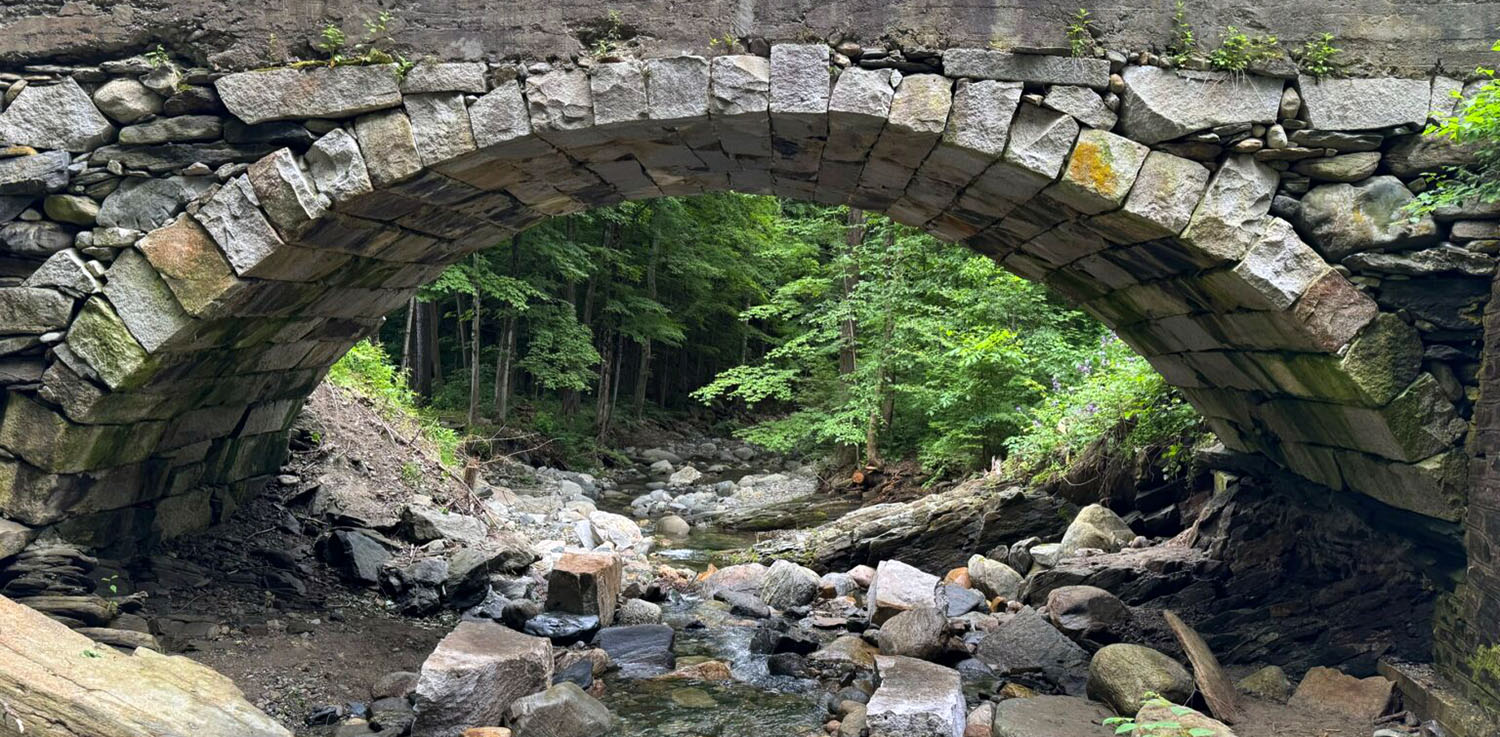
Bridge arch before restoration
The Restoration Process
The restoration began by constructing a temporary wood form to support the existing arch and provide a scaffolding network for workers. The concrete parapet walls, existing road base, spandrels, and some sections of the wing walls were then carefully taken down.
Following the deconstruction, the areas of deteriorating bedrock were replaced with granite, and the arch ring was re-mortared with Natural Hydraulic Lime mortar.
The spandrels were reconstructed using a mix of the existing stone and local fieldstone and granite. The infill of the bridge was then restacked with solid stone, including many large granite blocks to help support modern traffic.
The concrete parapet walls were replace with a steel railing and large granite curb stones matching the original bridge design.
